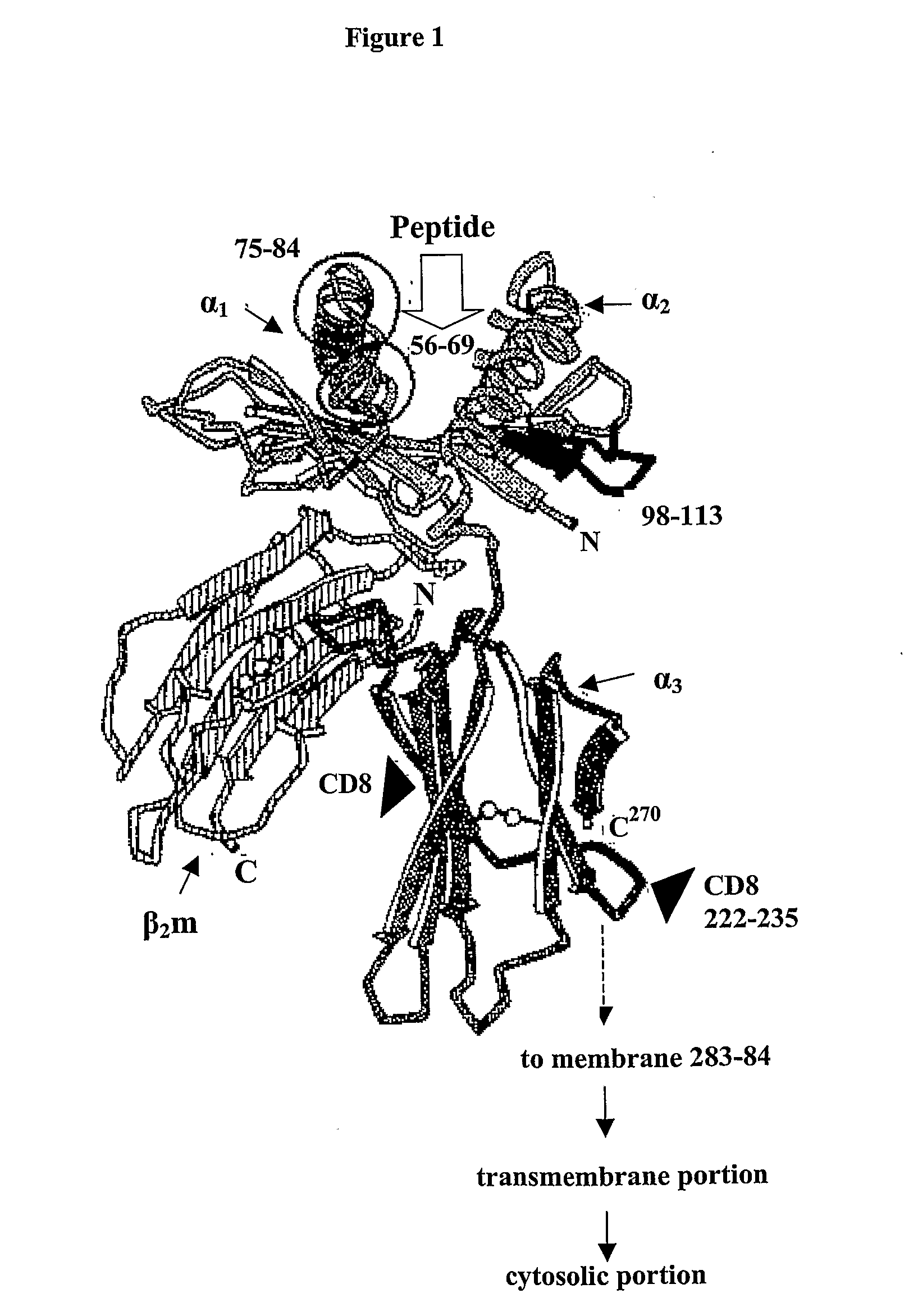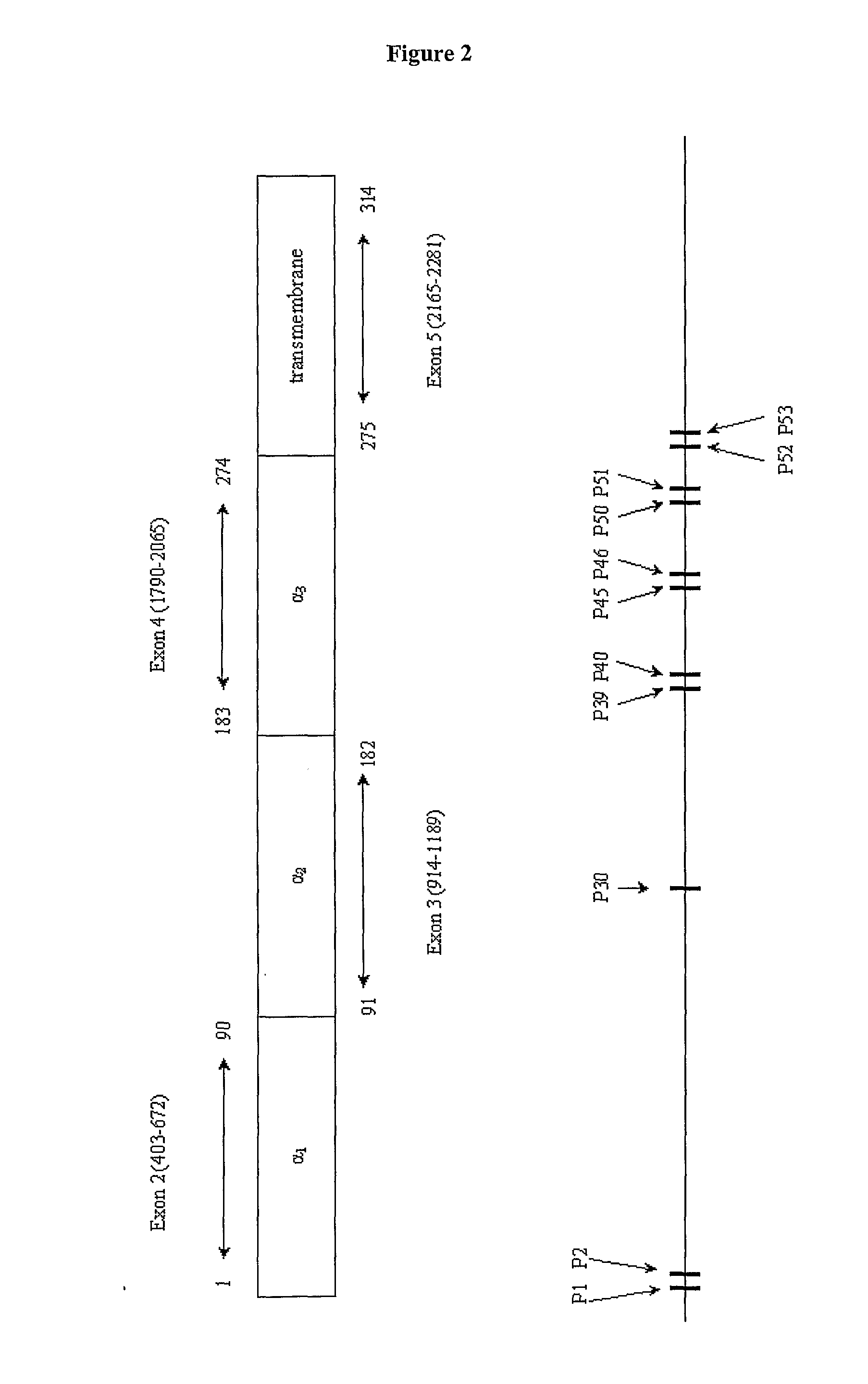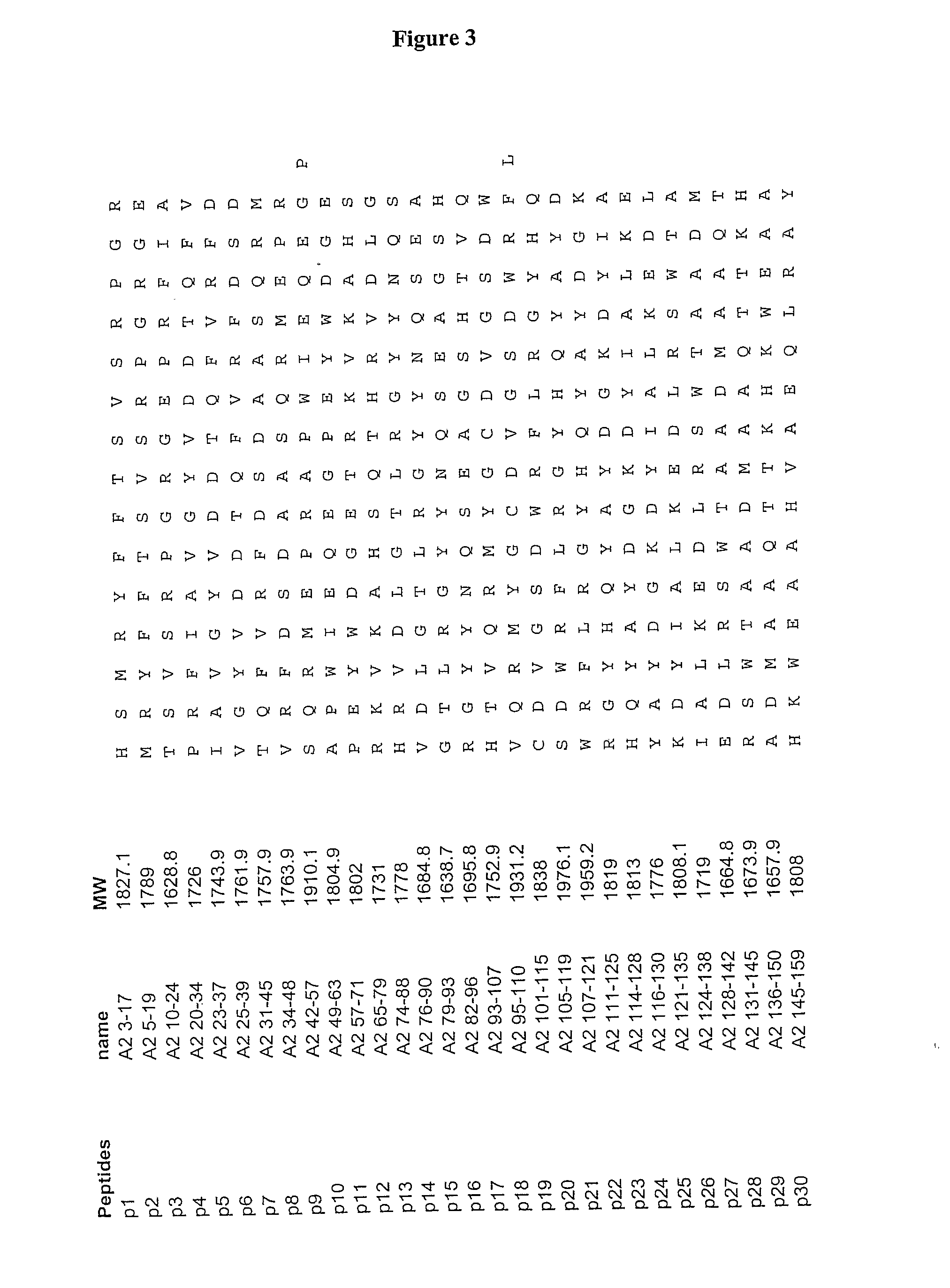Prognostic assay for determining t cell response to HLA antigens and use thereof in field of tissue transplantation
- Summary
- Abstract
- Description
- Claims
- Application Information
AI Technical Summary
Benefits of technology
Problems solved by technology
Method used
Image
Examples
example 1
Materials & Methods
1) In Silico Epitope Prediction
[0280]In order to limit the numbers of peptides to be screened in direct MHC-peptide binding assays and to maximise discrimination in areas likely to be of interest, a systematic approach was adopted involving an initial computer based evaluation of the primary amino acid sequence of the HLA-A*0201 molecule, i.e. HLA-A2. The DNA sequence of HLA-A2 is identified as SEQ ID NO: 3 and the amino acid sequence is identified as SEQ ID NOs: 1 and 2.
[0281]Referring to FIG. 1, there is shown a schematic representation of the extracellular portion of the human class I histocompatability molecule, HLA-A2. The stretches of beta conformation are represented by broad arrows (pointing N to C terminal). Regions of alpha helix are shown as helical ribbons. The pairs of spheres represent disulphide bridges. The molecule of beta-2-microglobulin (β2m) is bound to the junction of the α1 and α2 domains, and to the α3 domain by non-covalent interactions onl...
example patient
[0306]Referring to FIG. 8, there is shown an Elispot count of peptide reactive cells / 500,000 PBMCs. The concentration of peptide was 20 μg / ml. The data show that this individual, who has made high levels of anti-HLA antibody for approximately 10 years, on the background of previous pregnancy and transfusion, makes high frequency responses to p20, p39 and a mixture of p52 and p53. Her tissue type is A1,68; B37,44; C6,7 DR10,11. Hence, the patient responded to the highly polymorphic region and in particular to a sequence within the HLA-A2 sequence residues 105-121 covered by p20 & 21, that the inventor demonstrated binds promiscuously to MHC class II. She also responded to peptides from the α3 and transmembrane region of HLA-A2, the properties of which are described above. Indeed in her case, these responses are autoreactive because these sequences are shared with HLA-A68. The positive control response is to purified protein derivative of mycobacterium tuberculosis (PPD) and the negat...
example 2
Materials and Methods
Design of Peptides
[0310]60 overlapping peptides, 15 or 16 amino acids long, were designed so as to give optimal coverage of HLA-A*020101 for putative T cell epitopes, using the programme Tepitope (33). Solubility of peptides was predicted using the programme at www.expasy.org. Peptides were synthesized (NeoMPS, Strasbourg, France) using Fmoc chemistry as previously described, but of those designed, only 53 could be made. Biotinylation of control peptides was achieved by reaction with biotinyl-6-aminocaproic acid (Fluka Chimie, St. Quentin Fallavier, France) at the NH2 terminus of the molecule. All peptides were purified by reverse-phase HPLC on a C18 Vydac column, and their quality was assessed by electrospray mass spectroscopy and analytical HPLC.
Purification of HLA-DR Molecules
[0311]HLA-DR molecules were purified from HLA-homozygous EBV cell lines by affinity chromatography using the monoclonal anti-DR antibody L-243, coupled to protein A-Sepharose CL 4B gel (...
PUM
| Property | Measurement | Unit |
|---|---|---|
| Fraction | aaaaa | aaaaa |
Abstract
Description
Claims
Application Information
 Login to View More
Login to View More - R&D
- Intellectual Property
- Life Sciences
- Materials
- Tech Scout
- Unparalleled Data Quality
- Higher Quality Content
- 60% Fewer Hallucinations
Browse by: Latest US Patents, China's latest patents, Technical Efficacy Thesaurus, Application Domain, Technology Topic, Popular Technical Reports.
© 2025 PatSnap. All rights reserved.Legal|Privacy policy|Modern Slavery Act Transparency Statement|Sitemap|About US| Contact US: help@patsnap.com



